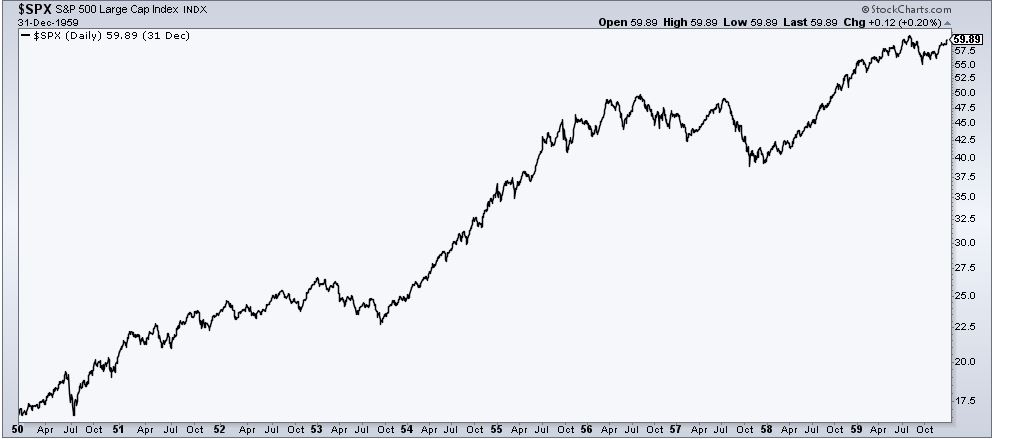The 1950s were a great time to be an investor. It was the only decade where stocks began at the lows and finished right near the highs. Furthermore, the total return on the S&P 500 was 486%, the strongest of any decade ever.

But when looking at historical returns, we fail to see what really matters, which of course are investor returns. It’s highly unlikely that they captured anywhere close to the 486% advance in the S&P 500.
Here are a few reasons why.
For the first half of the decade, stocks were still below the peak of 1929. Nobody was excited about owning great American businesses. In fact, sentiment was so bad that Congress called a hearing and interviewed Benjamin Graham to discuss “the orgy of speculation” that might result in a 1929-like disaster.
But let’s just pretend that investors were fully invested for those ten years. Let’s also pretend that mutual funds kept pace with the index (before fees). According to Bogle, there were 300 mutual funds in 1951 that charged a very reasonable 0.72% a year. However, the cost of getting into these funds was not unsubstantial. From The Financial Analysts Journal (LOL mine):
One objection which has been raised in connection with the sales of mutual fund shares is the sales charge which is imposed by all but a few open-end investment companies. This ranges from around 7 to 8 1 /2%…The answer that is made to criticism of the sales charge is that there is a markup in the purchase of anything, and insurance is cited as an example of this. Furthermore, if the salesman is properly trained, he renders investment advice to the client for which he should be compensated (LOL).
With the 0.72% annual drag, and the 7% load, mutual funds would not have come close to keeping up with the index. And this is all before the most important piece of the puzzle, investor behavior.
The 1950s saw four separate 10% drawdowns, which always shake some people out. And in 1957, the S&P 500 fell more than 20%. This drop in stocks coincided with a plethora of market-moving headlines, which included:
- The Asian Flu Pandemic, which killed 70,000 Americans and 1,000,000 people world wide.
- Hurricane Audrey, one of the most devastating hurricanes ever, which killed 500 people and resulted in $100,000,000 worth of damage.
- U.S. troops were sent to Little Rock, Arkansas when nine African-American students enrolled at Little Rock Central High School in Arkansas, a formerly all-white school.
- More than 400 Vietnam officials were assassinated by Viet Cong Guerrillas.
- Russia launched Sputnik, the world’s first artificial satellite during the Space Race.
And if any of these events caused investors to dump their stocks, they would have missed a 50% rebound over the next twenty-five months. The lesson here is obvious; returns are always easier looking in the rear-view mirror than they were at the time.
Source:
The Financial Analysts Journal, October 1951, Volume 7, Issue 4

